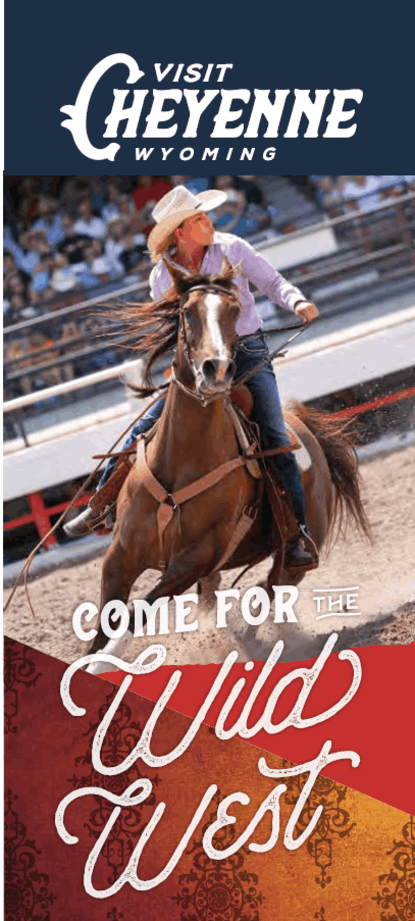Population & Demographics: Understanding Our Diverse Community
A Growing Capital Community
As you establish your practice in Cheyenne, you'll join a vibrant community of approximately 65,000 residents within the city limits, situated within a broader metropolitan statistical area (MSA) of roughly 100,000 people. Unlike the anonymous hustle of larger cities, Cheyenne offers the perfect balance—substantial enough to support diverse amenities and cultural offerings, yet small enough to foster meaningful connections. The city has experienced steady growth of about 9% over the past decade, creating a stable environment for your professional practice while avoiding the congestion and housing challenges that plague rapidly expanding urban centers.
- Cheyenne MSA population of approximately 100,000 represents nearly 20% of Wyoming's total population
- Steady growth rate of 9–10% over the past decade indicates sustainable expansion
- As the state capital and largest city, Cheyenne serves as Wyoming's economic and cultural hub
- The population is well-distributed across age groups, providing a diverse patient base for medical practices
The People of Cheyenne
Walking through Cheyenne, you'll notice a distinctive blend of western authenticity and cosmopolitan influence. The community includes multi-generational Wyoming families with deep roots in ranching and state government alongside military personnel who bring diverse perspectives from across the nation. You'll find yourself serving a patient population that values straightforward communication, personal relationships, and community connection. Your neighbors will include state employees, military personnel, healthcare professionals, small business owners, and ranchers—creating a rich social fabric that bridges traditional western values with contemporary perspectives.
- Median age of 36.5 years, slightly younger than the national average
- Diverse mix of long-established Wyoming families and newcomers drawn by military service or professional opportunities
- Strong representation of working professionals with approximately 31% of adults holding bachelor's degrees or higher
- Military presence through F.E. Warren Air Force Base brings geographic and cultural diversity to the community
Cultural Diversity and Community Events
Although predominantly Caucasian (77%), Cheyenne has growing Hispanic/Latino (15%), African American (3%), Asian (1%), and Native American (1%) communities that contribute to the city's evolving cultural landscape. This diversity manifests through community celebrations like the Hispanic Festival held annually at the Civic Center, the Native American Education powwow at Laramie County Community College, and the Asian/Pacific Festival at the Depot Plaza. As you become part of the community, these cultural events offer both enrichment and opportunities to connect with patients from various backgrounds.
- Annual cultural celebrations showcase the community's diverse heritage
- Growing international restaurants and specialty markets reflect increasing diversity
- Community organizations like the Cheyenne Diversity Council actively promote inclusivity
- The presence of F.E. Warren Air Force Base brings families with diverse backgrounds and experiences
Economic Profile and Professional Opportunities
Unlike many small cities that struggle with economic stability, Cheyenne's position as a state capital and military community provides a solid foundation of government employment supplemented by growing healthcare, technology, and energy sectors. For medical professionals with spouses seeking employment, this diverse economy offers substantial opportunities across multiple fields. The median household income of approximately $64,500 reflects a community with economic stability and purchasing power without the extreme cost pressures of larger metropolitan areas.
- Government employment (state, local, and federal) provides economic stability
- Growing healthcare sector, including Cheyenne Regional Medical Center and associated practices
- Emerging technology sector supported by Microsoft's data center investments
- Energy industry, including wind power development and traditional energy sources
Community Character and Values
What truly distinguishes Cheyenne's population is a characteristic blend of western self-reliance and community-minded cooperation. In your daily interactions, you'll find patients who value authenticity, straightforward communication, and personal relationships. Unlike metropolitan areas where PA-patient relationships can feel transactional, here you'll experience the satisfaction of becoming a respected and recognized community figure. Whether participating in community events like Cheyenne Frontier Days, attending performances at the Civic Center, or simply dining downtown, you'll regularly encounter patients who know you by name and value your role in the community.
- Strong ethic of community participation and volunteer service
- Genuine western hospitality that welcomes newcomers with authentic warmth
- Practical, no-nonsense approach to life balanced with deep community connections
- Civic pride evidenced by high voter turnout and engagement in local issues
Lifestyle Patterns and Health Considerations
As a healthcare provider, you'll serve a population with distinctive lifestyle patterns reflecting the outdoor-oriented western culture. Many residents participate actively in outdoor recreation like hiking, fishing, hunting, and winter sports, creating a community that values physical activity and connection to the natural environment. At the same time, you'll address health challenges common to western states, including sun exposure issues, altitude-related conditions, and climate-related health concerns. Your medical expertise will be valued in a community that balances independent self-reliance with respect for healthcare professionals.
- Active lifestyle oriented toward outdoor recreation and community events
- Strong interest in preventative care and maintaining active lifestyles into senior years
- Higher-than-average rates of sun exposure requiring dermatological vigilance
- Community health initiatives focusing on wellness and prevention gain strong participation
As you integrate into Cheyenne's community, you'll appreciate the balanced demographics, stable economic foundation, and authentic western character that create both a rewarding practice environment and a genuinely welcoming place to call home.
